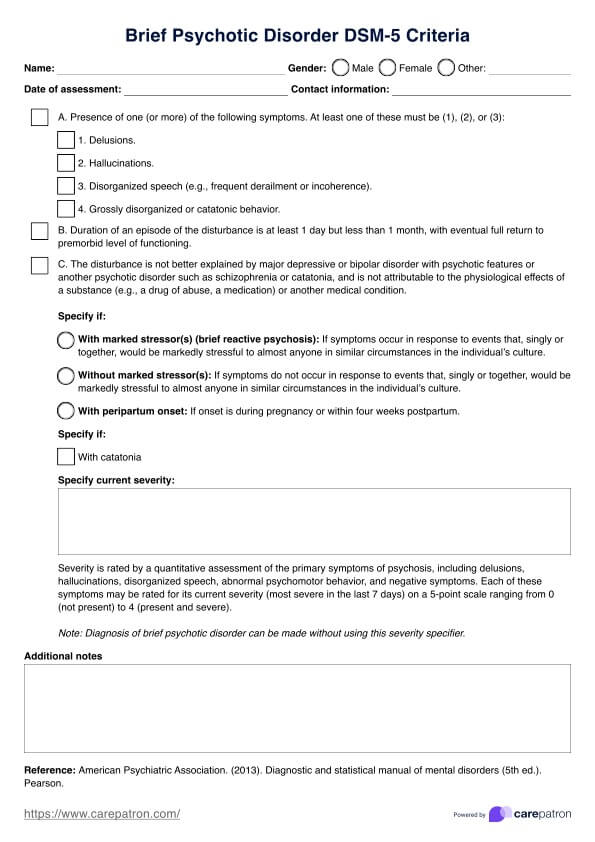Brief psychotic disorder, or transient psychotic disorder, is a specific mental health condition characterized by a sudden, short-term display of psychotic symptoms like hallucinations, delusions, disorganized speech, and odd behavior, lasting from 1 day to 1 month. Psychosis is a broader term that refers to a loss of contact with reality and can occur in various mental health conditions, not just brief psychotic disorders.

Brief Psychotic Disorder DSM-5 Criteria
Access a free printable reference and checklist of the Brief Psychotic Disorder DSM-5 Criteria.
Brief Psychotic Disorder DSM-5 Criteria Template
Commonly asked questions
The main difference is that schizophrenia involves chronic, long-term psychotic symptoms for at least six months, while brief psychotic disorder involves a sudden, short-term psychotic episode lasting less than 1 month.
According to the DSM-5, brief psychotic disorder is coded the same across different specifiers: Brief psychotic disorder with marked stressor(s): F23; Brief psychotic disorder without marked stressor(s): F23; Brief psychotic disorder with postpartum onset: F23 with specifier "with postpartum onset.
EHR and practice management software
Get started for free
*No credit card required
Free
$0/usd
Unlimited clients
Telehealth
1GB of storage
Client portal text
Automated billing and online payments











